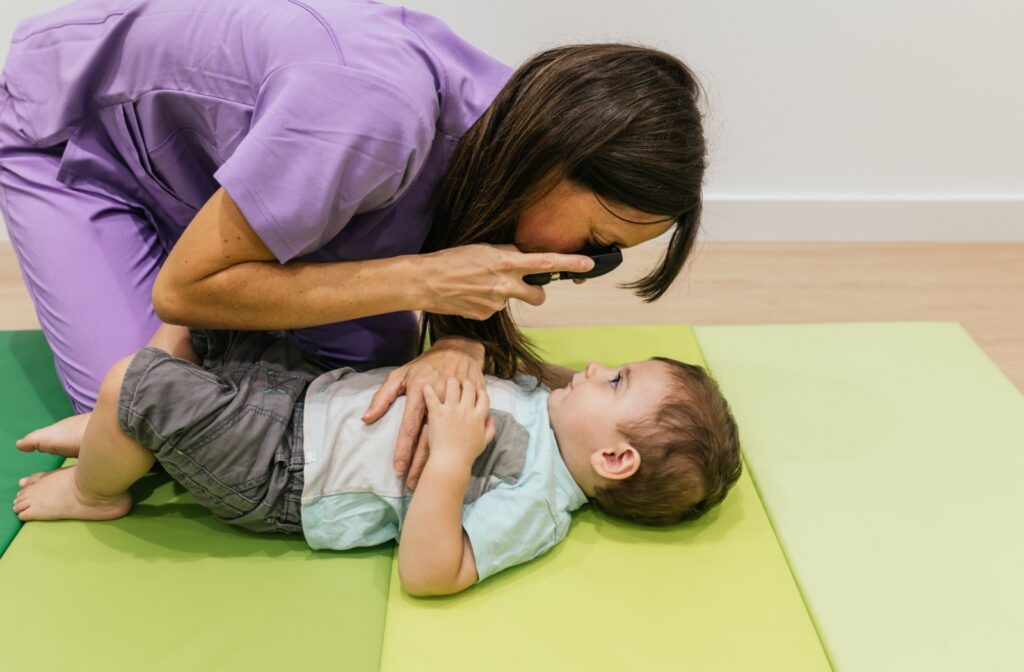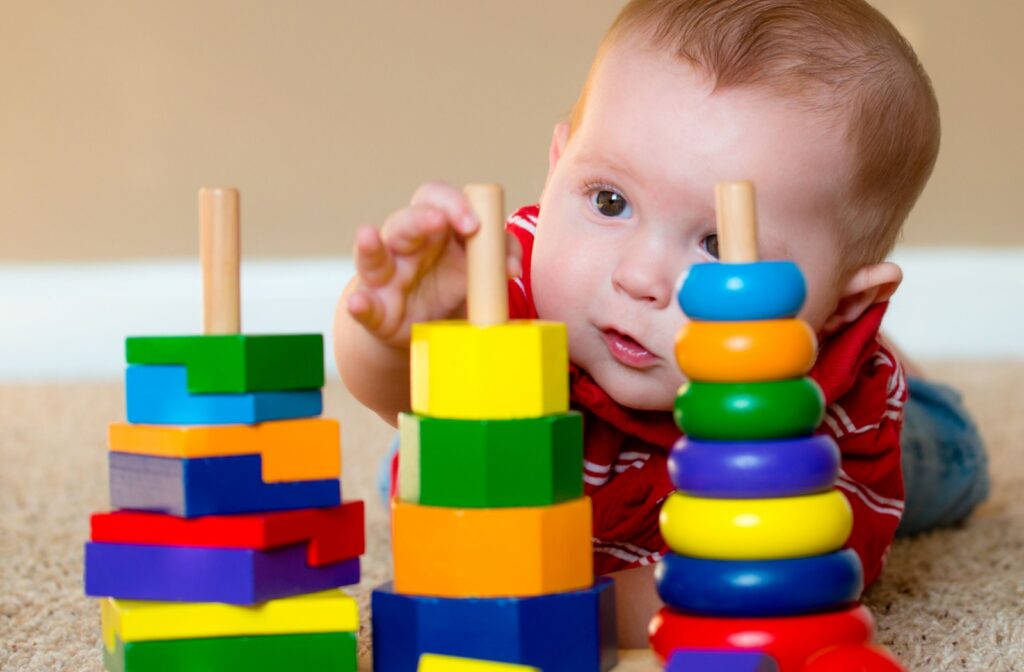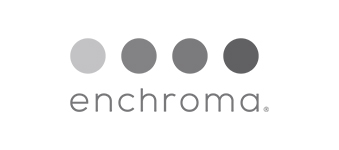Your baby’s eyesight is an essential part of their overall development, but how can you tell if something isn’t right? Unlike adults who know when they need to see their eye doctor, infants can’t tell us when they’re having trouble seeing.
That’s why it’s so crucial for parents to know the signs of vision problems and understand when to seek help. Some ways you can tell if your infant has vision problems include:
- Lack of eye contact
- Unusual eye movements
- Delayed visual milestones
- Excessive tearing or redness
- Sensitivity to light
- White or cloudy appearance in the pupil
These signs indicate the importance of taking your infant for all recommended eye exams as they grow up. Your child’s eye doctor can assess both their vision and overall eye health. When problems develop, they can provide an early diagnosis.
Common Signs of Vision Problems in Infants
When babies are a few months old, they should begin focusing on objects, recognizing faces, and tracking movements. While every child develops at their own pace, certain signs might indicate your baby has trouble with their vision.
Here are common signs to watch out for:
- Lack of eye contact, as infants typically start making eye contact by about 6–8 weeks
- If your baby seems to avoid doing this, it could be a sign of vision problems
- Unusual eye movements, such as frequent eye crossing after the first few months
- Uncontrollable eye movements, or eyes that don’t seem to align, could indicate an issue
- Delayed visual milestones, such as struggling to focus on objects or follow movement
- All babies develop at their own pace, but consistently struggling to meet milestones can suggest a delay in visual development
- Excessive tearing or redness
- Persistent tearing, redness, or discharge from the eyes might indicate an underlying eye condition that needs attention
- Sensitivity to light or avoiding bright light
- If your baby shows discomfort in bright environments, it may be worth investigating further
- White or cloudy appearance in the pupil
- Cloudiness or discoloration can signal a serious condition like cataracts, which requires immediate medical attention
If you notice any of these signs in your child, consult your pediatrician or eye doctor.

The Importance of Early Detection
Early detection of vision problems is crucial for your baby’s development. Nearly 80% of what children learn during their early years comes through visual input.
Identifying and treating eye issues early can make a difference in how they interact with and understand the world around them. Untreated vision problems can lead to developmental delays, challenges in learning, and even permanent vision loss in rare cases.
Some conditions, like amblyopia (lazy eye) or strabismus (crossed eyes), are much easier to treat if caught during infancy or early childhood when the visual system is still developing.
By tackling potential vision concerns early on, you give your child the best chance to thrive visually and developmentally.
Why Children’s Eye Exams Are So Important
While it’s easy to assume your baby’s eyes are fine if you see no apparent signs of trouble, the truth is only a professional eye exam can detect some eye conditions.
Conditions like refractive errors (nearsightedness, farsightedness, or astigmatism), eye alignment issues, and subtle diseases often show no outward symptoms in the early stages.
During a comprehensive children’s eye exam, their optometrist can assess several key factors, including:
- Visual acuity (sharpness of vision)
- Eye alignment and how well both eyes work together
- Eye movement and tracking ability
- Signs of eye disease or abnormalities
An eye exam can give you peace of mind, knowing that if there are any issues, you and your child’s eye doctor can address them early with personalized treatments, therapies, or corrective measures.
When Should a Child Have Their First Eye Exam?
The Canadian Association of Optometrists recommends that your baby have their first eye exam between 6 and 9 months old. At this stage, an optometrist can evaluate if their eyes are developing as expected and check for any early signs of vision problems.
Generally, eye doctors recommend that children continue to have eye exams:
- At least once between 2 and 5 to evaluate how their visual acuity is progressing and check for eye alignment issues
- Annual exams from age 5 onwards, especially once they start school, as this is when vision issues impacting learning may become apparent
Remember, provincial health plans in Canada often cover annual eye exams for kids, including in Saskatchewan, so there’s no reason to wait.
Tips for Supporting Your Child’s Vision Development
Did you know you can help promote your baby’s visual development right from home? Along with scheduling regular eye exams, here are a few simple activities you can do to nurture healthy eyesight:
- Encourage eye tracking with play
- Slowly move colourful toys or objects in front of your baby’s face to help them follow movement
- Play with textures and colours
- Offer toys with different shapes, textures, and contrasting colours to stimulate visual interest
- Tummy time to strengthen neck muscles
- Tummy time helps more than their motor skills, as it encourages them to strengthen neck muscles and practice eye movement and focus
- Limit screen time and encourage outdoor play
- Eye doctors recommend zero screen time for infants and children under 2, and less than 1 hour for ages 2–5, as too much screen time can strain young eyes
- Create an environment with proper lighting
- Keep an eye on lighting in your home to prevent your baby from straining their eyes in dim or overly bright conditions
By engaging their developing vision in fun, intentional ways, you lay the foundation for healthy eyesight, now and in the future.
Book Your Child’s Eye Exam Today for Early Vision Care
There’s nothing more important than giving your child the tools they need to grow and succeed. With regular eye exams and the right care, you can help support your child with every milestone they reach.
If you’re ready to take the first step, schedule an eye exam for your little one today. Our experienced optometrists at Stonebridge Eyecare are here to provide compassionate, thorough care for your growing family.










